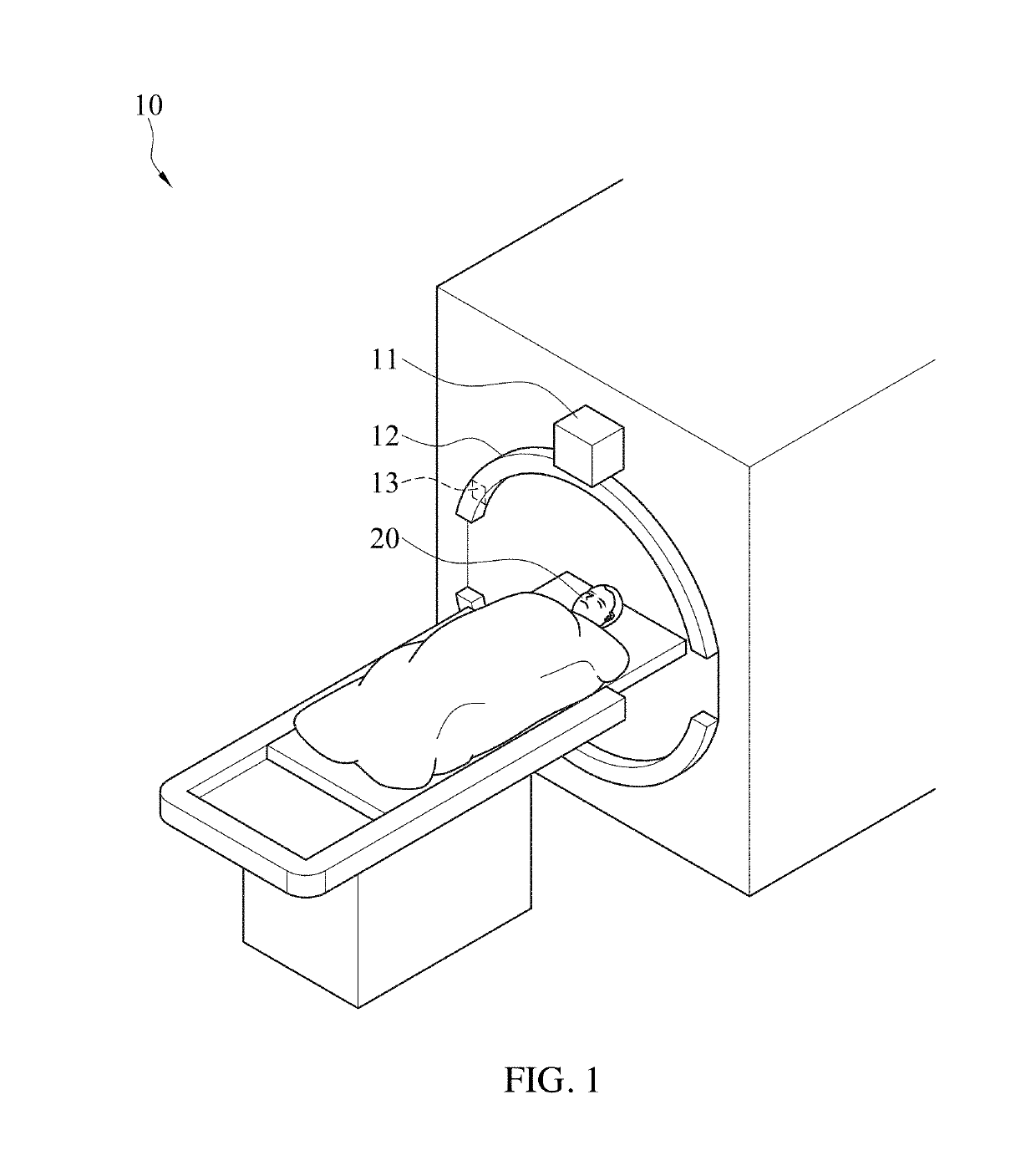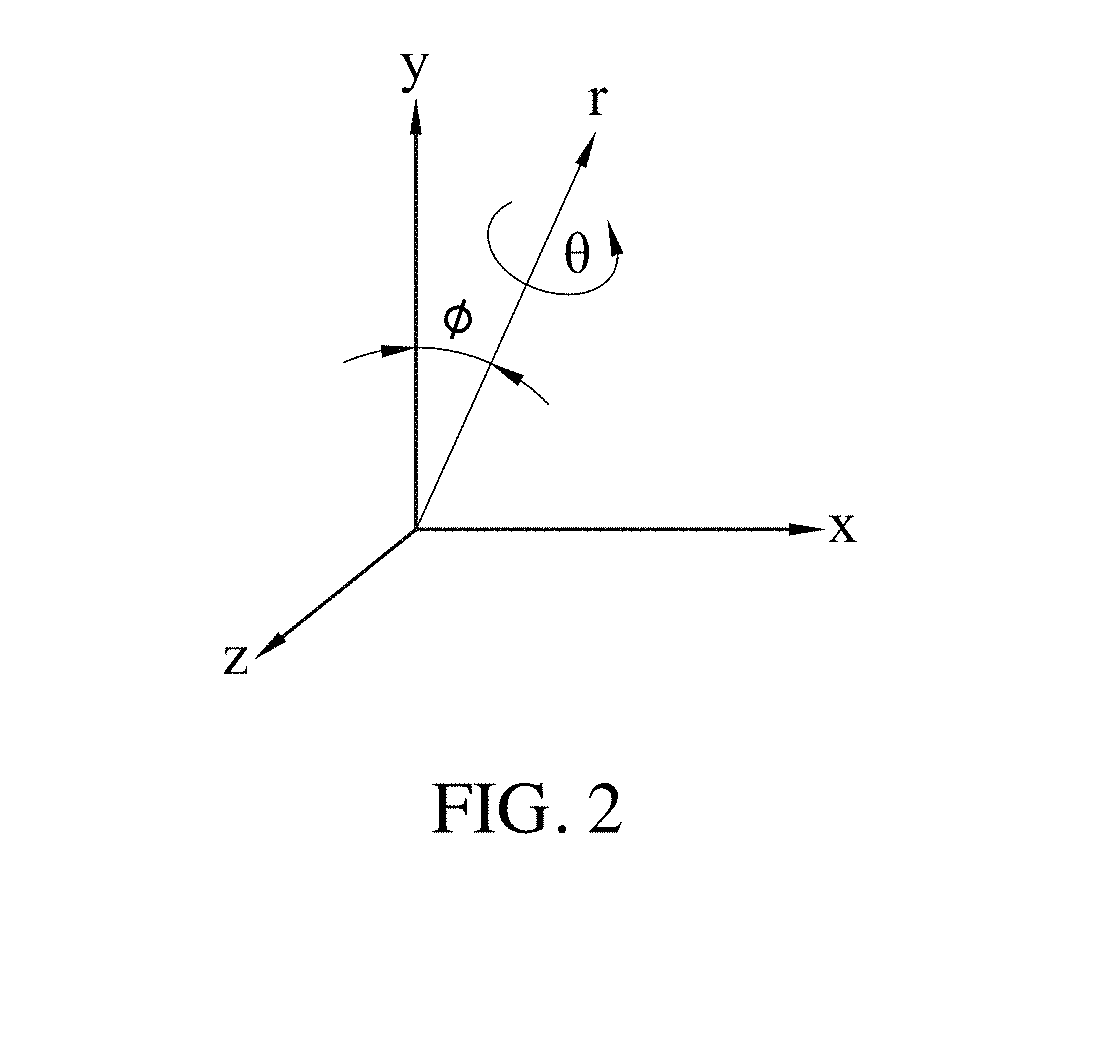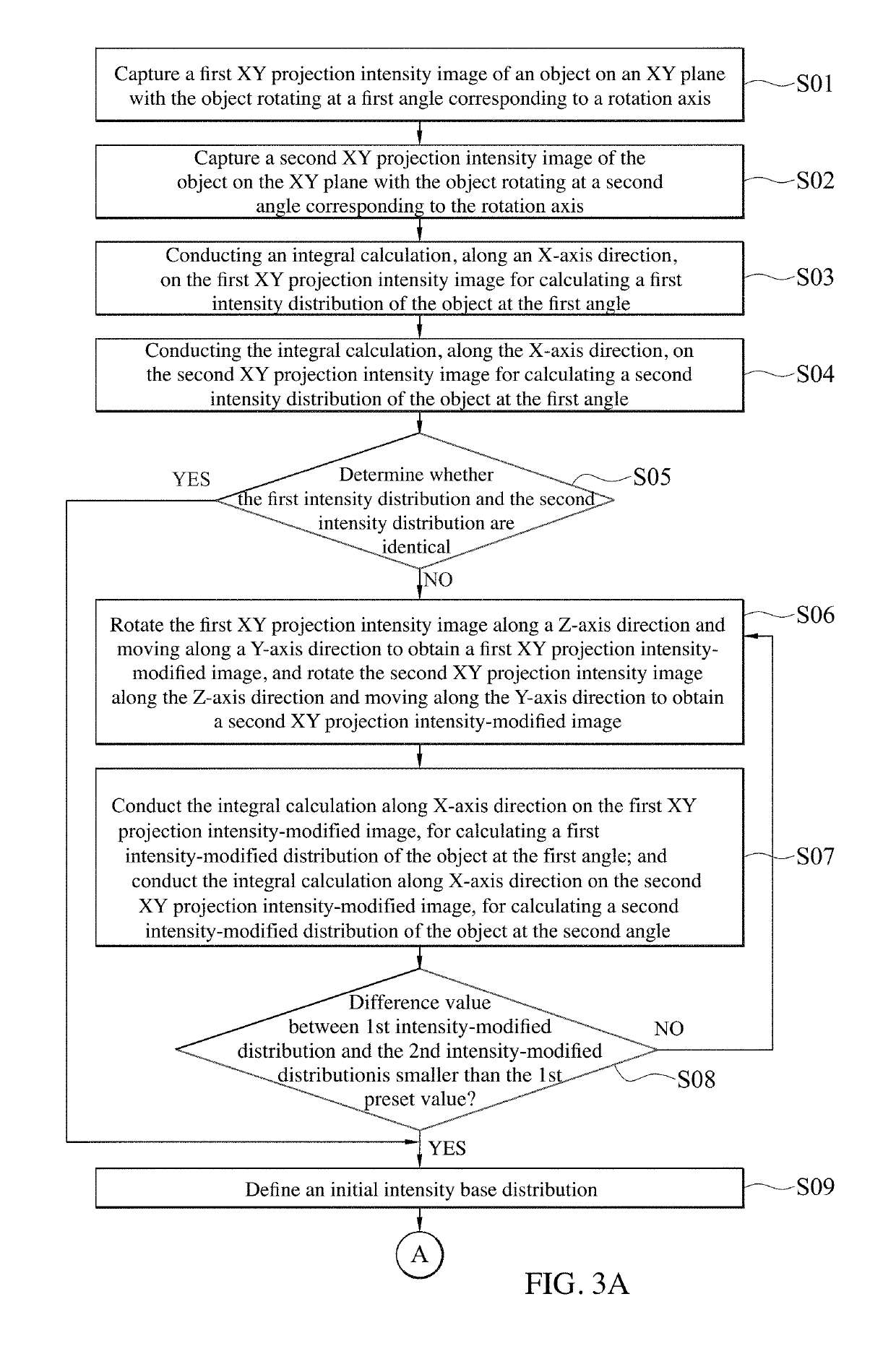Fast projection matching method for computed tomography images
a computed tomography and projection matching technology, applied in tomography, image enhancement, instruments, etc., can solve the problems of unexpected image drift, inability to achieve precise positioning accuracy, and complex and time-consuming conventional mechanical alignment procedures
- Summary
- Abstract
- Description
- Claims
- Application Information
AI Technical Summary
Benefits of technology
Problems solved by technology
Method used
Image
Examples
Embodiment Construction
[0035]FIG. 1 illustrates an explanatory perspective view of a computed tomography apparatus 1 adapted for a fast projection matching method for computed tomography images according to an embodiment of the instant disclosure. FIG. 2 illustrates an explanatory perspective view of a reference coordinate system. Referring to FIG. 1 and FIG. 2 jointly, the computed tomography apparatus 1 includes a light emitting unit 11, a data-receiving unit 12 and a processing unit 13. The processing unit 13 is coupled with the data-receiving unit 12. In an embodiment, the processing unit 13 may be installed in the data-receiving unit 12.
[0036]During the computed tomography process, the light emitting unit 11 and the data-receiving unit 12 and the object 20 may rotate corresponding to each other. For example, the object 20 is still, while the light emitting unit 11 and the data-receiving unit 12 rotate corresponding to the object 20; alternatively the light emitting unit 11 and the data-receiving unit...
PUM
 Login to View More
Login to View More Abstract
Description
Claims
Application Information
 Login to View More
Login to View More - R&D
- Intellectual Property
- Life Sciences
- Materials
- Tech Scout
- Unparalleled Data Quality
- Higher Quality Content
- 60% Fewer Hallucinations
Browse by: Latest US Patents, China's latest patents, Technical Efficacy Thesaurus, Application Domain, Technology Topic, Popular Technical Reports.
© 2025 PatSnap. All rights reserved.Legal|Privacy policy|Modern Slavery Act Transparency Statement|Sitemap|About US| Contact US: help@patsnap.com



